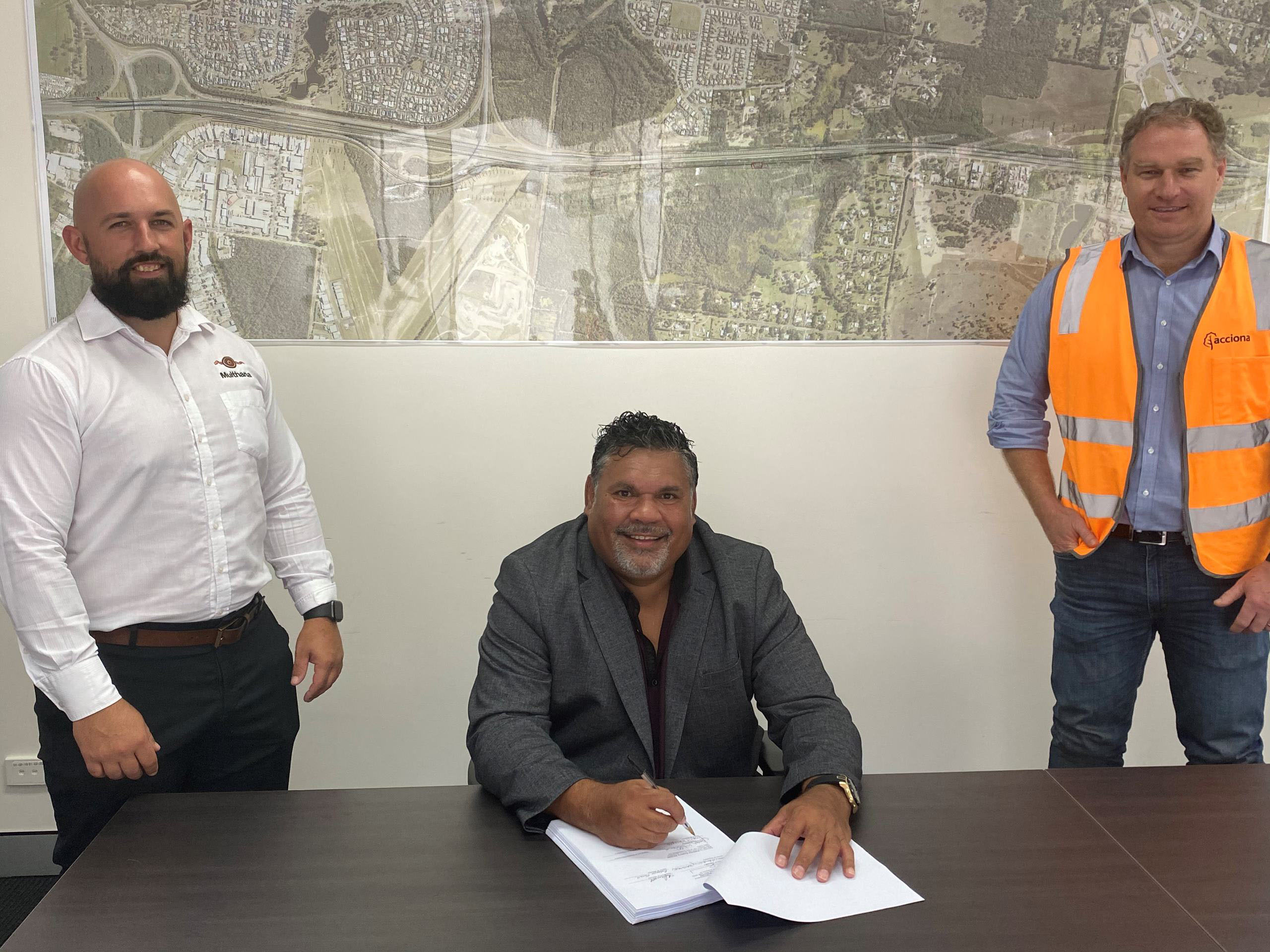
The project is being delivered under the Bruce Highway Upgrade Program – the largest infrastructure program Queensland has ever seen, aimed at improving safety, flood resilience and capacity along the length and breadth of the Bruce Highway between Brisbane and Cairns.
The entire program will deliver $12.6 billion of works over a 15-year period, which is jointly funded by the Australian and Queensland Governments on an 80:20 basis, and includes the vital upgrade between Caboolture-Bribie Island Road and Steve Irwin Way.
The $662.5 million Caboolture-Bribie Island Road and Steve Irwin Way project will widen the 11km stretch of the Bruce Highway from a four-lane to a six-lane divided carriageway and includes replacing 10 bridges over five creek crossings with wider and higher bridges.
The project continues to create economic opportunities for Aboriginal and Torres Strait Islander-owned businesses through the Queensland Building and Construction Training Policy.
To that end, Multhana, which has been in operation for four years and employs 170 people, was recently awarded a $2.4 million landscaping contract. It includes hydro mulching, turfing, planting and the establishment and maintenance of landscaped areas alongside the highway between the Caboolture and Pumicestone interchanges.
largest landscaping contract to date and its first landscaping contract with the Department of Transport and Main Roads.
Multhana Founder Joseph Wallace said it is a legacy-building opportunity for his company and his workforce of Aboriginal and Torres Strait Islander staff.
“Multhana is a Kalkadoon word that means ‘people coming together to help one other’ and we do landscaping, commercial cleaning and building maintenance. We started out with just four people four years ago and now we have 170 people, with a team of 40 in the landscaping division. Almost half of our staff are Aboriginal and a third are women,” said Joseph.
“Our very first employee, a young Aboriginal man, is still with us today. We strive to create a great working environment for women, which can be tough in the construction industry, and we have worked hard to build our capacity and refine our tender process to confidently compete with the best in the field.”
Full article originally published here.
